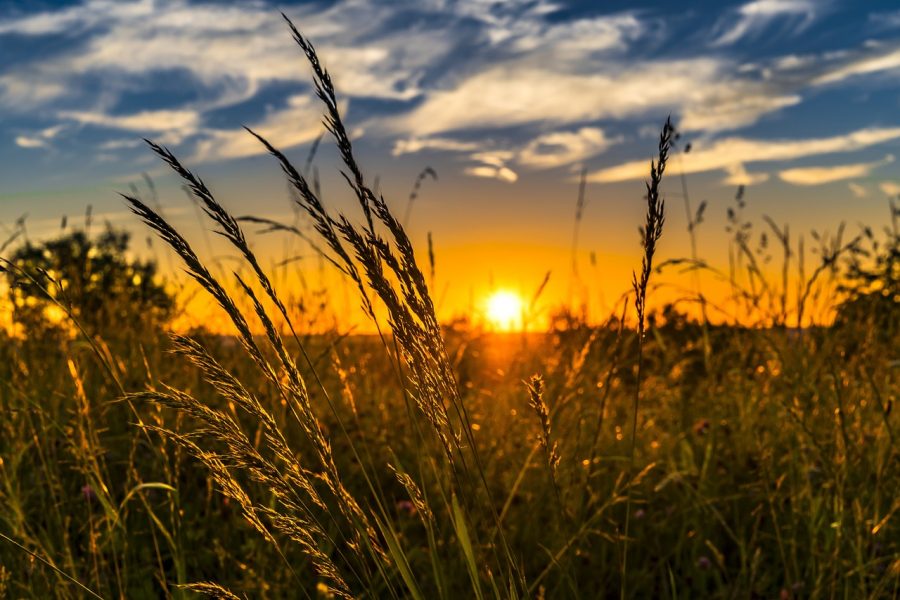
Communication is Key: An IPCC Education Report to Expand Outreach
28 July 2025
How Does Science Contribute to Climate Action? The Case of Climate Finance
28 July 2025By Jeske LOONSTRA
Imagine a busy intersection.
The car, bike and pedestrian traffic.
The honking of the cars, the hustle and bustle of the city.
Now imagine a field full of grain.
The sun overhead.
The grain rustling in the wind, feeling it brush against your legs.
It is through our senses that we engage with nature. Sight, hearing, touch and smell play a key role in shaping our experience of nature. It is sound, the singing of a bird, the chirping of crickets, that is the defining feature of this connection (Morrison et al., 2021).
But, exactly these sounds, or what is called our natural soundscape, are eroding. Rampant global biodiversity losses due to practices like intensive agriculture and deforestation, and the intensifying cacophony of human-made sounds in urban areas are deteriorating our natural soundscapes rapidly (Morrison et al., 2021).
We should be worried about the negative effects of the loss of natural sounds.
As our natural soundscapes decline in urban and rural areas, we are less and less connected to nature. Research (Schebella et al., 2017; Whitburn et al., 2020) shows that the more detached we are from the environment, a phenomenon especially prominent in urban populations, the less we seem to care about its preservation. The concerning effect is a decrease in advocacy and funding for environmental actions.
This effect might be one piece of the ‘why are we not acting enough to combat climate change?’ puzzle. And, considering the trend of growing urbanisation (about 7 out of 10 people are expected to live in urban areas by 2050 (United Nations Department of Economic and Social Affairs, 2019) there are more reasons than ever to be worried about our future natural soundscapes. Restoring and protecting them, both in urban and rural areas, is imperative.
One way to restore these natural soundscapes is by expanding urban and rural green infrastructures. In a rural setting, agroforestry, when tailored to local circumstances, improves agricultural productivity, sequesters between 0.1 and 5.7 Gigaton of CO2 per year, reduces vulnerability to climate shocks, and provides recreational and cultural benefits (Intergovernmental Panel On Climate Change, 2019; Sollen-Norrlin et al., 2020). Urban greening, next to its mitigating effects on heat and improvement of air quality, also improves human health and well-being. (Uebel et al., 2021).
Policies to increase the financial incentive to expand such green infrastructures, such as subsidies and payments for the ecosystem services provided, should be implemented to overcome the first challenges (Sollen-Norrlin et al., 2020).
A promising initiative is the Sounds Right project by Museum for the United Nations, initiated by Colombian artists. Through the project, NATURE has been registered as an artist on music platforms. The royalties earned from NATURE’s music will be donated to conservation projects in the Global South.[1]
Many challenges need to be overcome if we want to bring back our natural soundscapes to our cities and rural areas. Reestablishing our connection with nature through sound is a vital first step to inspire individual and collective actions to address climate change.
[1] For more information, see https://www.museumfortheunitednations.com/soundsright
References
Intergovernmental Panel On Climate Change. (2019). Climate Change and Land: IPCC Special Report on Climate Change, Desertification, Land Degradation, Sustainable Land Management, Food Security, and Greenhouse Gas Fluxes in Terrestrial Ecosystems (1st ed.). Cambridge University Press. https://doi.org/10.1017/9781009157988
Morrison, C. A., Auniņš, A., Benkő, Z., Brotons, L., Chodkiewicz, T., Chylarecki, P., Escandell, V., Eskildsen, D. P., Gamero, A., Herrando, S., Jiguet, F., Kålås, J. A., Kamp, J., Klvaňová, A., Kmecl, P., Lehikoinen, A., Lindström, Å., Moshøj, C., Noble, D. G., … Butler, S. J. (2021). Bird population declines and species turnover are changing the acoustic properties of spring soundscapes. Nature Communications, 12(1), 6217. https://doi.org/10.1038/s41467-021-26488-1
Schebella, M. F., Weber, D., Lindsey, K., & Daniels, C. B. (2017). For the Love of Nature: Exploring the Importance of Species Diversity and Micro-Variables Associated with Favorite Outdoor Places. Frontiers in Psychology, 8. https://doi.org/10.3389/fpsyg.2017.02094
Sollen-Norrlin, M., Ghaley, B. B., & Rintoul, N. L. J. (2020). Agroforestry Benefits and Challenges for Adoption in Europe and Beyond. Sustainability, 12(17), Article 17. https://doi.org/10.3390/su12177001
Uebel, K., Marselle, M., Dean, A. J., Rhodes, J. R., & Bonn, A. (2021). Urban green space soundscapes and their perceived restorativeness. People and Nature, 3(3), 756–769. https://doi.org/10.1002/pan3.10215
United Nations Department of Economic and Social Affairs. (2019). World Urbanization Prospects: The 2018 Revision. UN. https://doi.org/10.18356/b9e995fe-en
Whitburn, J., Linklater, W., & Abrahamse, W. (2020). Meta-analysis of human connection to nature and proenvironmental behavior. Conservation Biology, 34(1), 180–193. https://doi.org/10.1111/cobi.13381


